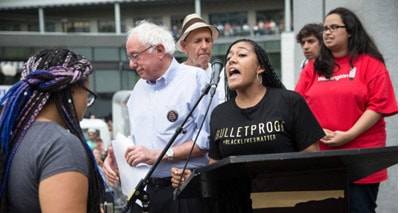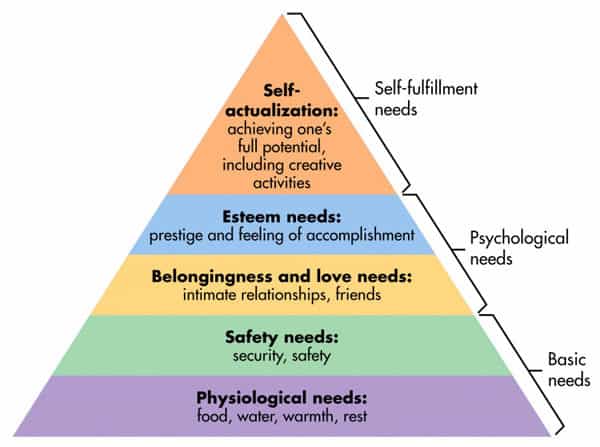Why White Liberals Will Wake Up
Patrick McDermott, American Renaissance, September 28, 2018

White liberals are maddening. They proclaim devotion to progressivism, completely oblivious to the demographic dangers on the horizon. Indeed, in the Trump era, most polls show they hold even more desperately to their delusions. If you warn them, they stare at you blankly. If you are a friend or relative, count yourself lucky that they still tolerate you and your beliefs.
Delusional obstinacy cannot be ignored. Liberal views are a systematic threat to Western Civilization. History has shown what European peoples can do when we are reasonably united. No foreign enemy could destroy us without help from a substantial share of our own people. To turn the tide, we must win our people back.
White liberals are neither evil nor irredeemable. They are misguided. Older forms of white liberalism, which were far more hardheaded and realistic, show how much the latest version is an aberration. The road to perdition may be paved with good intentions, but most liberals will awaken before we get there. They will be standing with us when we emerge on the other side.
Liberal psychology
Understanding how white liberals will change requires an understanding of how their minds work. Although no single theory adequately covers human behavior, one framework will do for our purposes.
Maslow’s hierarchy of needs, first proposed in 1943 by Abraham Maslow, explains human motivation as the product of a variety of needs, presumed to have derived evolutionarily. Lower-order needs must be met before higher-order needs. Although neuroscience has advanced considerably since 1943, Maslow’s framework remains popular, and many of his ideas have been substantially confirmed by more recent research.

Maslow’s “hierarchy of needs”
Self esteem and love/belonging are particularly important for understanding white liberals. These needs are part of our nature as a social species.
Morality is closely linked with these needs; it helped tribes survive and thrive in humanity’s early years. Individuals who are viewed as moral win status, while those who viewed as immoral can face serious consequences. Even without such punishments, humans fear social rejection.
In today’s Western societies, anti-racism has come to be viewed as moral, and racism as the ultimate evil. There are incentives for conformity and rewards for status-seeking (sometimes called “virtue signaling”) on racial issues. When this moral paradigm conflicts with other needs — such as the desire to live in a safe neighborhood — rationalizations provide cover for hypocrisy so white liberals can avoid guilt and cognitive dissonance.
As social creatures, white liberals are programmed to conform to the dominant moral paradigm in their social environment. Conservatives are no different. The human tendency toward conformity is one reason why American politics are so polarized, not just ideologically but also geographically.
Research has also shown that people are highly resistant to facts that challenge their convictions. They seize on information that confirms their beliefs and ignore information that challenges them. Stronger challenges can even backfire, causing people to double down on their original position. Troy Campbell at University of Oregon explains that “as causes become our identity, we don’t just believe we are right anymore; we need to believe we are right to maintain self-worth.”
The missing ingredient: fear
Liberalism’s ties to its own version of morality, combined with the human need for self esteem and social belonging, make orthodoxy powerful. How do we break these barriers? The answer may be near the bottom of Maslow’s hierarchy: the need for safety. Recent research suggests that the need for safety is even more important than Maslow thought.
Many white liberals will not be convinced by rational arguments. They will be convinced only by threats to their safety. The real barrier is that most white liberals do not feel threatened.
Most of them do not see a crumbling civilization. They see a thriving economy and a strong stock market. They think immigration is beneficial. They see no meaningful differences between people. They recognize that race relations are not perfect, but they think the problem will be solved when we eliminate poverty and get rid of Donald Trump. They think times are good, and Trump voters are just suffering from irrational phobias and “white anxiety.”
One of the starkest differences between Trump and Hillary Clinton voters — starker than the typical right/left divides — was their views on immigration. No fewer than 73 percent of Hillary voters thought it is “racist” to oppose immigration because it is diluting the ethno-cultural core of the country; only 11 percent of Trump voters thought this was “racist.”
Few people who are living in a bubble are able to see it until it pops. Iconoclasts who are right too soon are usually seen as misfits. However, the liberal bubble is about to pop. The signs are all around us.
The growing threat
Many white liberals will probably wake up over the next decade, and primarily for five reasons. The first is instinctive ethnocentrism, which is found humans and animals, and even in babies. This is the basis for the other factors.
The second is increasing direct contact with minorities, which will increase as the nation continues to change. Some academics argue that contact can improve race relations, but other research has shown that negative effects are stronger. White flight from neighborhoods and schools clearly answers this question.
A third factor is cultural threat. Unlike direct contact, which is lessened by white flight, there is no escaping mass culture. As Vox noted in article called “White Threat in a Browning America,”
We live in an America where television programs, commercials, and movies are trying to represent a browner country; where Black Panther is a celebrated cultural event and #OscarsSoWhite is a nationally known hashtag; where NFL players kneel during the national anthem to protest police brutality and pressing 1 for English is commonplace.
This is a constant reminder to America’s whites that their nation is changing. Research has shown that such messages make them become more conservative, view minorities less positively, and feel more attached to other whites.
A fourth factor is the increasing frequency of explicitly anti-white statements. The idea that “whiteness” is evil and should be abolished originated in academia, but now it is seeping into the broader culture and political discourse. Treating people equally and with decency regardless of their race was once enough to avoid being called a racist, but now it brings charges of color-blind racism and implicit bias. Unsurprisingly, research has found that accusations of white privilege make people feel defensive and resentful. Even “white allies” are not immune to criticisms; Black Lives Matter demonstrators protested Bernie Sanders’ candidacy. Non-whites blamed white women for Trump’s election, and accused them of “white supremacy in heels.”
The fifth factor, political threat, may be the most important because, unlike the others, it cannot be avoided or ignored. The principal source of this threat is the nation’s changing demographics, which are empowering non-whites and shifting the Democratic Party sharply to the left. The effects of this change have been evident in elections this year. These have included the well-publicized primary victories of Alexandria Ocasio-Cortez in New York, Andrew Gillum in Florida, and Stacey Abrams in the Georgia, as well as victories for lesser known candidates in governors’ races in Texas, Arizona, New Mexico, and Maryland.

Alexandria Ocasio-Cortez stood shaking the fence with other protesters shouting toward federal immigration agents asking them to stop the separation of children. (Credit Image: © Josh Bachman/ZUMA Wire)
While many of these candidates will probably lose in November, they are paving the way for victories down the road as more states become majority-minority in the lead up to 2045, when the nation as a whole will reach that milestone. These changes, which are concentrated in the Democratic Party, can also be expected to shift future Democratic presidential nominees further left.
The reaction of white voters to hard-left ideological swings is well-established. Two of the most left-leaning presidential nominees in modern history, George McGovern and Walter Mondale, were trounced at the polls. More recently, moderate Republican gubernatorial candidates have a solid track record of defeating far-left Democrats in deep blue states. What accounts for this? Many white liberals, particularly those with high household incomes, are not as far left as they think.
White liberals may not feel threatened by the Left today — particularly with Republicans controlling Congress and Trump dominating the news — but that will change. As the nation changes, the mainstream media and social media may try to clamp down on opposing views, but they are unlikely to stifle the voices of the far left, which will do far more to open the eyes of white liberals than conservatives could. They are our unwitting allies. Whenever someone kneels during the national anthem, calls for abolishing whiteness, or attacks another cherished Western tradition for its roots in “white supremacy,” more white people wake up to the growing threat.
“White people riot quietly”
In 1995, a white liberal named Roger Boesche wrote an opinion piece in the Los Angeles Times after the OJ Simpson verdict, warning that when white people riot, they do it quietly:
I am afraid that even liberals, in the face of cheers by African Americans who saw the not guilty verdict as a victory over racism, will say: ‘I supported affirmative action; I applauded programs for the poor, and I thought Rodney King’s attackers were guilty. But I am still jeered as a racist. To hell with it. I’m going to close my doors and pull down the shades. It’s time to retreat to private life and ignore public affairs.’
How will we know when white liberals have changed? Most will not publicly proclaim their shift. There will instead be occasional calls for bipartisanship and arguments against the growing tide of identity politics. And then there will be silence as former liberals say less and less, daring only to whisper among friends about their growing concern about the direction of the country.
The real sign will be at the ballot box, where the racial divide will become obvious and stark. Over time, it is not unrealistic to assume that voting patterns at the national level will begin to mirror those of the South, where 80-90 percent of whites support Republican presidential candidates.
In another article, I suggested that America may be on a path toward partition by mid-century. Such an outcome is not far-fetched. It would not be the first time the United States has faced secession. Polls already show significant cross-party support for the idea. Moreover, there is a global history of partition: Soviet Union, Czechoslovakia, Yugoslavia, Ireland, Norway, Finland, and Sweden. And this does not include brewing independence movements such as those in Scotland, Quebec, and Brazil.
The Soviet Union, one of the 20th century’s two superpowers, was destroyed because it promoted an ideology that ignored human nature. The world’s other superpower could also be destroyed for the same reason, for willfully ignoring the inevitability of ethnic conflict.
The primary purpose of nations is to preserve and protect their peoples. When a nation stops serving that purpose, the time has come to build a new one.















